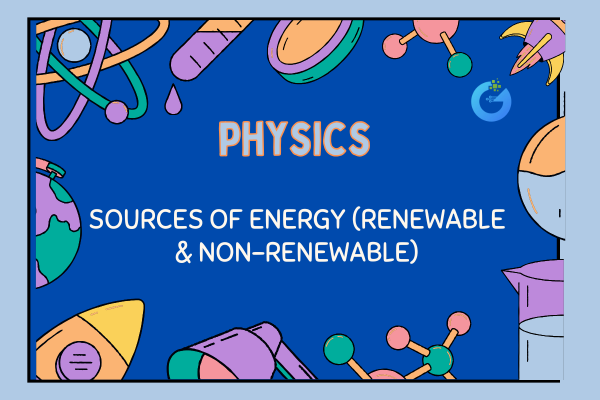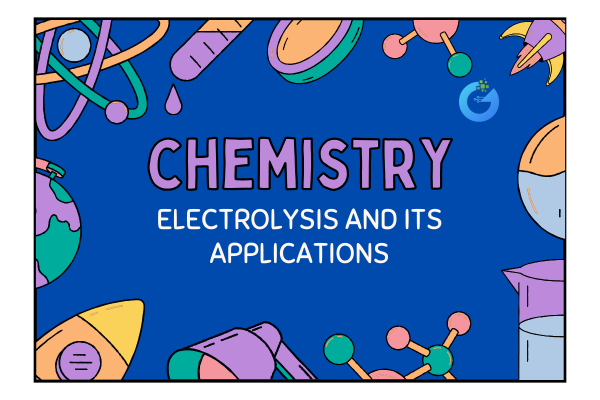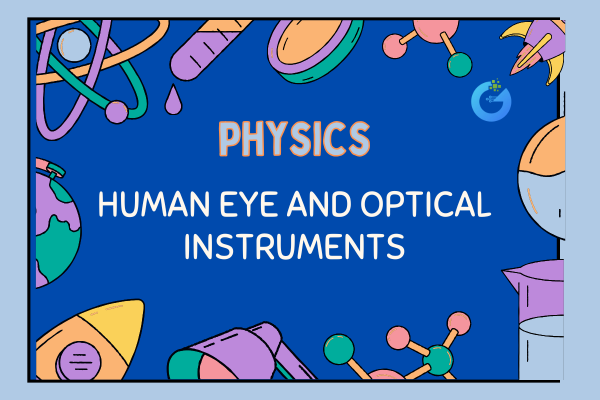Introduction
Try to imagine a day without switching on the light, charging your phone, or taking a warm shower. Sounds difficult, doesn’t it?
That’s because energy is everywhere. It powers our homes, our schools, factories, transport, and even the food we eat. But here’s the big question: Where does all this energy come from—and will it last forever?
In this chapter, we’ll understand:
- Where we get our energy
- Which sources are renewable or non-renewable
- How these sources affect our environment
- What makes a good energy source
And we’ll do this the easy way—with examples, comparisons, and real-life uses.
expert-led Physics classes – visit our website to learn more
What Is Energy?
Energy is the capacity to do work. Without energy, machines don’t run, bulbs don’t glow, and life as we know it comes to a stop.
Everything that makes life modern—from electricity to transport—depends on energy.
Types of Energy Sources
All energy sources are classified into two main types:
| Type | Description |
| Renewable | Can be replenished naturally and never run out |
| Non-Renewable | Exist in limited amounts and take millions of years to form |
Renewable Sources of Energy
These are the energy sources we can keep using without worrying about running out. They are clean and environmentally friendly.
1. Solar Energy
- Comes from the Sun
- Captured using solar panels or solar cookers
- Used for: heating water, powering homes, cooking food
Best for: sunny regions
Limitations: No sunlight = no energy (e.g., at night or cloudy days)
2. Wind Energy
- Wind turns turbine blades
- Converts kinetic energy into electricity
- Used in wind farms in coastal and open areas
Best for: coastal areas or open plains
Limitations: Only works when the wind is strong enough
3. Hydropower (Water Energy)
- Water stored in dams falls down, spinning turbines
- Converts potential energy to electricity
Advantages:
- Very clean
- Powerful and reliable
- Stores energy for later use
Disadvantages:
- Building dams displaces people
- Affects river ecosystems
4. Biomass Energy
- Made from organic waste like crop remains, dung, or wood
- Burned directly or converted into biogas
Used for:
- Rural cooking and lighting
- Biogas plants
5. Tidal and Wave Energy
- Uses ocean tides or waves to spin turbines
Challenges:
- Expensive to build
- Limited to coastal areas
6. Geothermal Energy
- Comes from heat trapped inside the Earth
- Used to produce steam and run turbines
Advantages of Renewable Energy
- Will never run out
- No air pollution
- Helps reduce global warming
- Supports rural electrification
- Promotes energy independence
Limitations of Renewable Energy
- High cost of setup
- Energy output is weather-dependent
- Needs large areas (e.g., solar farms or windmills)
Non-Renewable Sources of Energy
These are sources that exist in limited amounts. Once used, they are gone forever (or take millions of years to form again).
1. Coal
- Burned in thermal power plants
- Used to produce electricity and heat
2. Petroleum (Crude Oil)
- Refined into petrol, diesel, and kerosene
- Used in vehicles, industries, and plastics
3. Natural Gas
- Used for cooking (LPG), heating, and electricity
4. Nuclear Energy
- Uses uranium or plutonium
- Fission reaction produces huge amounts of energy
Advantages of Non-Renewable Energy
- Easy to use and transport
- High energy output
- Supports heavy industries
Disadvantages of Non-Renewable Energy
- Pollutes air and water
- Causes global warming
- Will run out someday
- Mining and drilling damage nature
- Nuclear waste is toxic and long-lasting
Comparing Renewable vs. Non-Renewable Energy
| Feature | Renewable | Non-Renewable |
| Availability | Unlimited | Limited |
| Pollution | Low or none | High (air, water, land) |
| Cost (initial) | High setup | Moderate |
| Energy Output | Moderate (depends on source) | Very high |
| Maintenance | Low | High |
| Sustainability | Very sustainable | Not sustainable |
Characteristics of a Good Energy Source
A good energy source should:
- Be easily available
- Have high energy output
- Be safe and easy to store
- Cause minimum pollution
- Be affordable and reliable
Solar Energy – A Closer Look
- Solar panels convert sunlight into electricity
- Solar cookers trap sunlight to cook food
- Solar water heaters warm water using black surfaces and glass
Used in: homes, schools, street lights, calculators
Nuclear Energy – Powerful but Risky
- Uses uranium-235 to release energy through fission
- One uranium pellet = energy of tons of coal
- No air pollution but creates radioactive waste
Dangerous if leaks occur (like Chernobyl or Fukushima disasters)
Key Formulas You Should Know
| Formula | Use |
| Energy = Power × Time | Total energy consumed (kWh or joules) |
| Efficiency = (Useful energy / Total input) × 100% | Measures how efficient an energy system is |
Core Concepts Table
| Concept | Meaning |
| Renewable Energy | Source that never runs out (e.g., sun, wind) |
| Non-Renewable | Source that takes millions of years to form |
| Biomass | Energy from organic waste |
| Solar Panel | Converts sunlight into electricity |
| Hydropower | Energy from moving water |
Frequently Asked Questions
Q1. What’s the best source of energy for the future?
Renewable sources like solar and wind—clean and infinite.
Q2. Why are fossil fuels harmful?
They cause pollution, global warming, and are running out.
Q3. Is nuclear energy safe?
It’s powerful but risky if not handled with care. Waste disposal is a big issue.
Q4. Can we run the whole world on renewable energy?
Yes, with enough investment, technology, and awareness.
Q5. What’s the simplest renewable energy to use at home?
Solar energy—easy to install and great for rooftops.
Fun Facts
- The sunlight Earth receives in one hour could power the world for a whole year!
- India’s largest solar park is in Bhadla, Rajasthan.
- The first working nuclear reactor was built in 1942.
- Iceland gets almost 100% of electricity from renewable sources.
Conclusion
Energy drives our lives—but how we use it decides the future of our planet.
Renewable energy is our best hope for a clean, green, and long-lasting future. Non-renewable sources helped us reach where we are, but now it’s time to move forward with smarter choices.
Let’s not just use energy, let’s choose it wisely.








